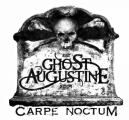History of Halloween
Hallowe’en, or Halloween, is a tradition celebrated on the night of October 31, most notably by children dressing in costumes and going door-to-door collecting sweets, fruit, and other gifts. A specifically American variation of this is called trick-or-treating. Some other traditional activities include costume parties, watching horror films, going to haunted houses, and traditional autumn activities such as hayrides, some of which may even be haunted.
Halloween originated under a different name (“Samhain”) as a Pagan festival among the Celts of Ireland and Great Britain with mainly Irish and Scots and other immigrants transporting versions of the tradition to North America in the nineteenth century. Many other Western countries have embraced Halloween as a part of American pop culture in the late twentieth century.
Halloween is celebrated in most parts of the Western world, most commonly in the United States, Canada, Puerto Rico, Ireland, the United Kingdom, Peru, and with increasing popularity in Australia and New Zealand. In recent years, Halloween has also been celebrated in parts of Western Europe.
The term Halloween, and its older rendering Hallowe’en, is shortened from All-hallow-even, as it is the evening of/before “All Hallows’ Day” (also known as “All Saints’ Day”). The holiday was a day of religious festivities in various northern European Pagan traditions[citation needed], until Popes Gregory III and Gregory IV moved the old Christian feast of All Saints’ Day from May 13 to November 1. In the ninth century, the Church measured the day as starting at sunset, in accordance with the Florentine calendar. Although we now consider All Saints’ (or Hallows’) day to be on the day after Halloween, they were, at that time, considered to be the same day. Liturgically, the Church traditionally celebrated this day as the Vigil of All Saints, and, until 1970, a day of fasting. Like other vigils, it was celebrated on the previous day if it fell on Sunday, although the secular aspects of the holiday remained on the 31st. The Vigil was suppressed in 1955, although somewhat restored in the post-Vatican II calendar.
In Ireland, the name was All Hallows’ Eve (often shortened to Hallow Eve), and though seldom used today, it is still a well-accepted label, albeit somewhat esoteric. The festival is also known as Samhain or Oíche Shamhna to the Irish, Samhuin in Scottish Gaelic, Calan Gaeaf to the Welsh, Allantide to the Cornish and Hop-tu-Naa to the Manx. Halloween is also called Pooky Night in some parts of Ireland, presumably named after the púca, a mischievous spirit.
Many European cultural traditions hold that Halloween is one of the liminal times of the year when spirits can make contact with the physical world and when magic is most potent (e.g. Catalan mythology about witches, Irish tales of the Sídhe).
